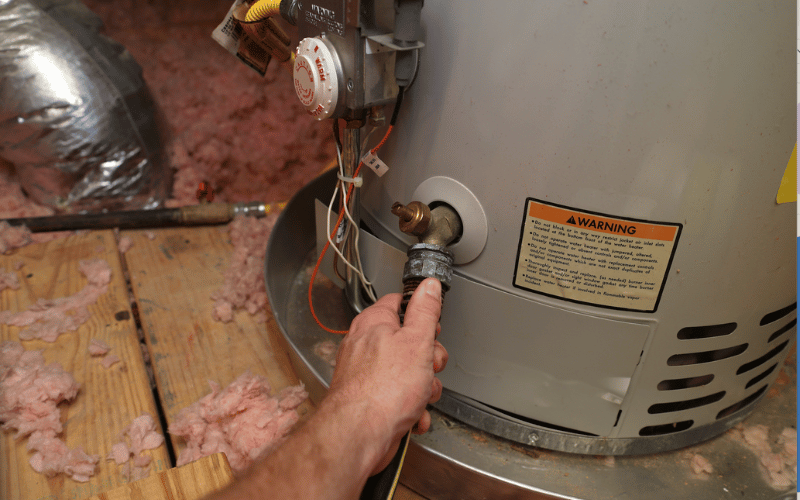How to Maintain Your Home's Hot Water System Properly
How to Maintain Your Home's Hot Water System Properly
Blog Article
How do you actually feel on the subject of How to Maintain a Hot Water Heater in a Few Simple Steps?

Warm water is essential for day-to-day convenience, whether it's for a rejuvenating shower or washing dishes. To ensure your warm water system runs effectively and lasts longer, normal upkeep is essential. This short article offers functional tips and understandings on just how to preserve your home's warm water system to avoid disturbances and expensive repair work.
Introduction
Keeping your home's hot water system may seem challenging, however with a couple of simple actions, you can guarantee it operates smoothly for several years ahead. This guide covers whatever from recognizing your hot water system to DIY upkeep tips and understanding when to contact specialist assistance.
Importance of Preserving Your Warm Water System
Routine upkeep not just extends the life-span of your warm water system yet additionally ensures it operates efficiently. Overlooking upkeep can bring about decreased efficiency, higher energy expenses, and even premature failure of the system.
Indications Your Warm Water System Demands Maintenance
Understanding when your hot water system needs interest can stop significant concerns. Look out for signs such as inconsistent water temperature level, unusual sounds from the heating system, or corroded water.
Flushing the Water Heater
Flushing your water heater gets rid of debris build-up, boosting performance and prolonging its life.
Monitoring and Changing Anode Rods
Anode poles avoid deterioration inside the tank. Examining and changing them when broken is essential.
Complex Issues Requiring Professional Aid
Examples include major leakages, electric troubles, or if your hot water heater is continually underperforming.
Regular Specialist Maintenance Advantages
Expert upkeep can include complete inspections, tune-ups, and guaranteeing compliance with safety requirements.
Checking and Adjusting Temperature Level Setups
Changing the temperature setups makes certain optimum efficiency and security.
DIY Tips for Maintenance
You can execute numerous maintenance jobs on your own to keep your hot water system in leading problem.
Checking for Leaks
Routinely inspect pipelines and connections for leakages, as these can result in water damage and greater expenses.
Recognizing Your Warm Water System
Before diving into maintenance jobs, it's valuable to recognize the fundamental elements of your warm water system. Normally, this includes the hot water heater itself, pipes, anode rods, and temperature level controls.
Monthly Maintenance Tasks
Normal month-to-month checks can assist capture minor concerns before they rise.
Evaluating Pressure Alleviation Valves
Evaluating the stress relief valve guarantees it functions properly and prevents excessive stress buildup.
Shielding Pipes
Protecting warm water pipes minimizes heat loss and can save power.
When to Call a Professional
While do it yourself upkeep is helpful, some issues need expert knowledge.
Verdict
Regular upkeep of your home's warm water system is vital for performance, longevity, and cost financial savings. By adhering to these suggestions and understanding when to look for professional assistance, you can make sure a dependable supply of hot water without unanticipated disruptions.
How to Maintain an Instant Hot Water Heater
Before tinkering with your hot water heater, make sure that it’s not powered on. You also have to turn off the main circuit breaker and shut off the main gas line to prevent accidents. Also turn off the water valves connected to your unit to prevent water from flowing into and out of the appliance. 2. When you’re done, you have to detach the purge valves’ caps. These look like the letter “T†and are situated on either side of the water valves. Doing so will release any pressure that has accumulated inside the valves while at the same time avoid hot water from shooting out and burning your skin. 3. When the purge valves’ caps are removed, you have to connect your hosing lines to the valves. Your unit should have come with three hoses but if it didn’t, you can purchase these things from any hardware or home repair shops. You can also get them from retail stores that sell water heating systems. Read the user’s manual and follow it to complete this task properly. When the hosing lines are connected, open the purge port’s valves. 4. You should never use harsh chemical cleaners or solutions when cleaning your unit. Make use of white vinegar instead. It should be undiluted and you’ll probably use about 2 gallons. 5. Now flush your water heater. This task should probably take about 40 minutes. We can’t give you specific directions for this because the procedure is carried out depending on the type, model and brand of your heater. With that being said, refer to the user’s manual. 6. When you’re done draining the unit, you have to turn off the purge port valves again. Remove the hosing lines that you earlier installed on each of the water valves. Put the valve caps (purge port) back in their respective places and be very careful so as not to damage the rubber discs that are found inside these caps. 7. Now that everything’s back in place, check your user’s manual again to find out how to reactivate your water heating system. 8. Once it is working, turn one of your hot water faucets on just to let air pass through the heater’s water supply pipes. Leave the tap on until water flows smoothly out of it. https://www.orrplumbing.com/blog/2014/september/how-to-maintain-an-instant-hot-water-heater/

I'm just very focused on What Kind of Maintenance Do Water Heaters Need? and I am hoping you appreciated the piece. Sharing is good. You never know, you may just be helping someone out. Thanks a bunch for being here. Please pay a visit to our blog back soon.
Schedule Service Now Report this page